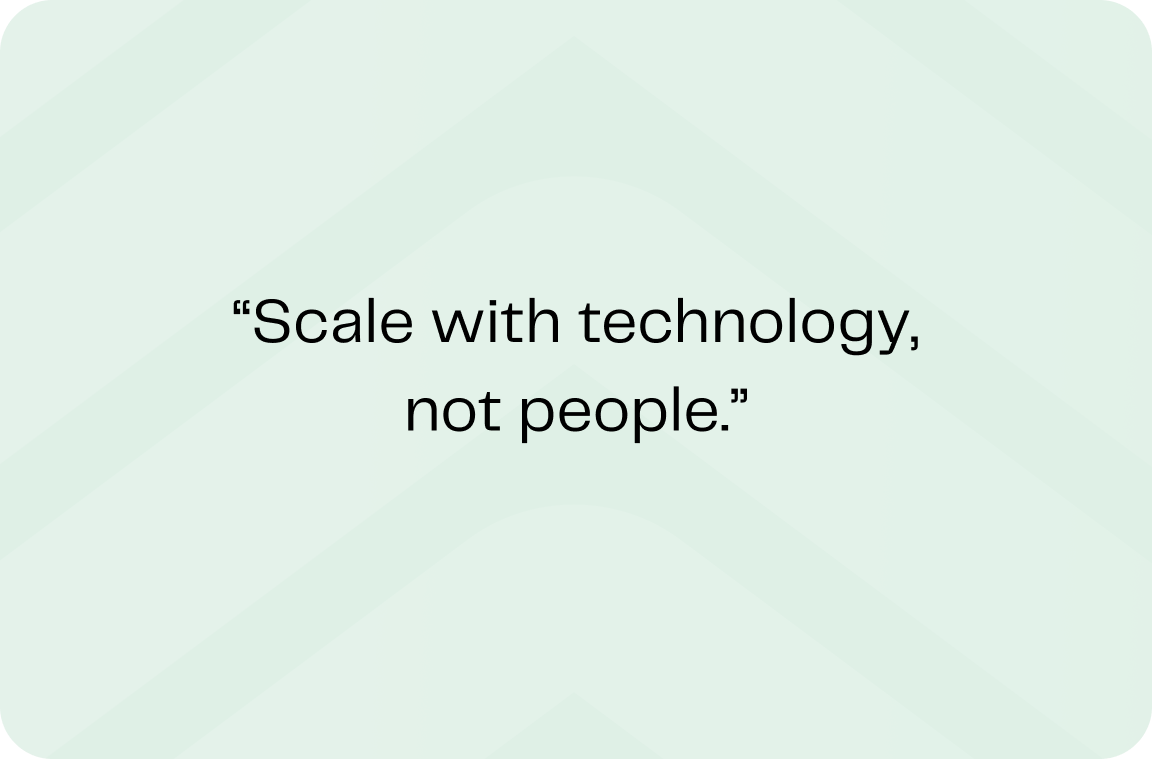Imagine a freight operation where repetitive, manual tasks are automated, data is standardized, and your staff are free to focus on high-value activities. That’s the core vision behind scaling with technology.
Whether it’s automating customs declarations, auditing AP invoices, or managing complex booking data, AI can dramatically reduce the operational burden. Instead of hiring more staff every time you land a new account, you can expand capacity through technology, improving your cost-to-serve and increasing your competitiveness.
In our video Tapping AI’s Potential, we explore how leading freight forwarders are using Raft’s solutions to achieve exactly that.
Building a Data Flywheel
Automation doesn’t just eliminate manual work; it generates higher-quality data. And high-quality data, in turn, fuels even better automation and optimization. This creates a positive flywheel effect:
“If you use automation to get better data, you can then take that better data and use it to drive ever improved automation and optimize your business as well.”
By standardizing and aggregating the vast volumes of documents and inputs that flow through freight forwarding, companies can begin asking smarter questions — about profitability, trade lane performance, and customer service levels — to continuously improve their business.
Supporting insights from Streamlining Logistics Data reinforce this advantage: cleaner data enables you to become a data-driven operator, capable of making proactive, evidence-backed decisions that traditional methods simply cannot match.

How to Succeed: It’s Not Just Tech, It’s Change Management
Technology alone isn’t enough. The most successful transformations combine technology with a thoughtful change management approach.
Raft works with enterprises across hundreds of countries and thousands of staff, providing proven frameworks to roll out new systems at scale. From “train the trainer” programs to specialized tiger teams — customer-embedded champions who gain deep expertise in applying Raft’s platform — we help organizations manage adoption, build confidence, and deliver results.
Tiger teams are an essential ingredient in successful transformations:
“They end up being real experts in Raft and how Raft can be applied to their business and generally they love the experience.”
The lesson? Scaling with technology requires people who understand both the tech and the day-to-day realities of freight operations.
The Competitive Advantage of Scaling with Tech
By shifting to a technology-driven operating model, forwarders and brokers gain more than lower costs. They build:
- Resilience against talent shortages
- Faster, more accurate service
- The ability to prove operational excellence to customers and win more business
- A long-term foundation for data-driven decision-making
As highlighted in AI’s Role in the Future of Airfreight, logistics businesses that invest in AI now will have a measurable advantage in the years ahead, both operationally and strategically.
Call to Action
If you’re ready to explore how your organization can scale with technology — and not headcount — download our 5-Step AI Readiness Checklist to get started.
Or watch our recent interview with Raft CEO James Coombes from Multimodal, where he explains these concepts in detail.
